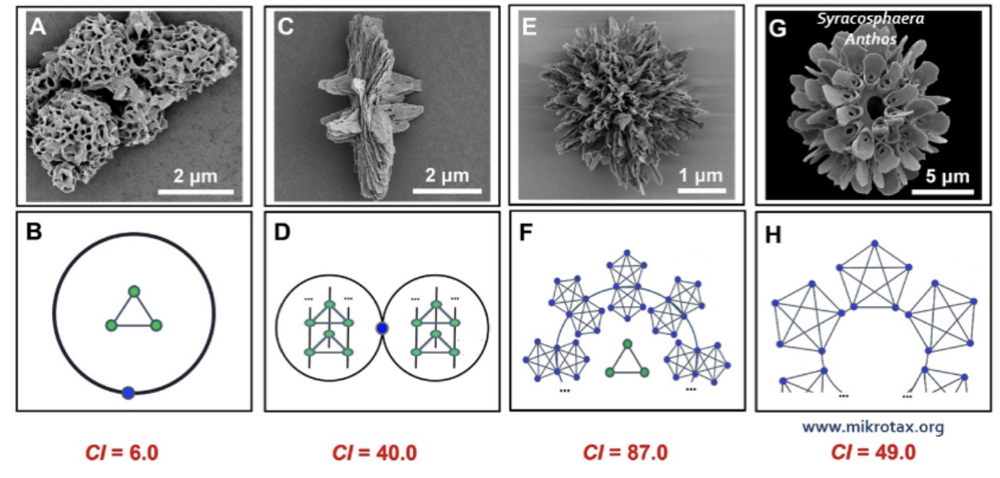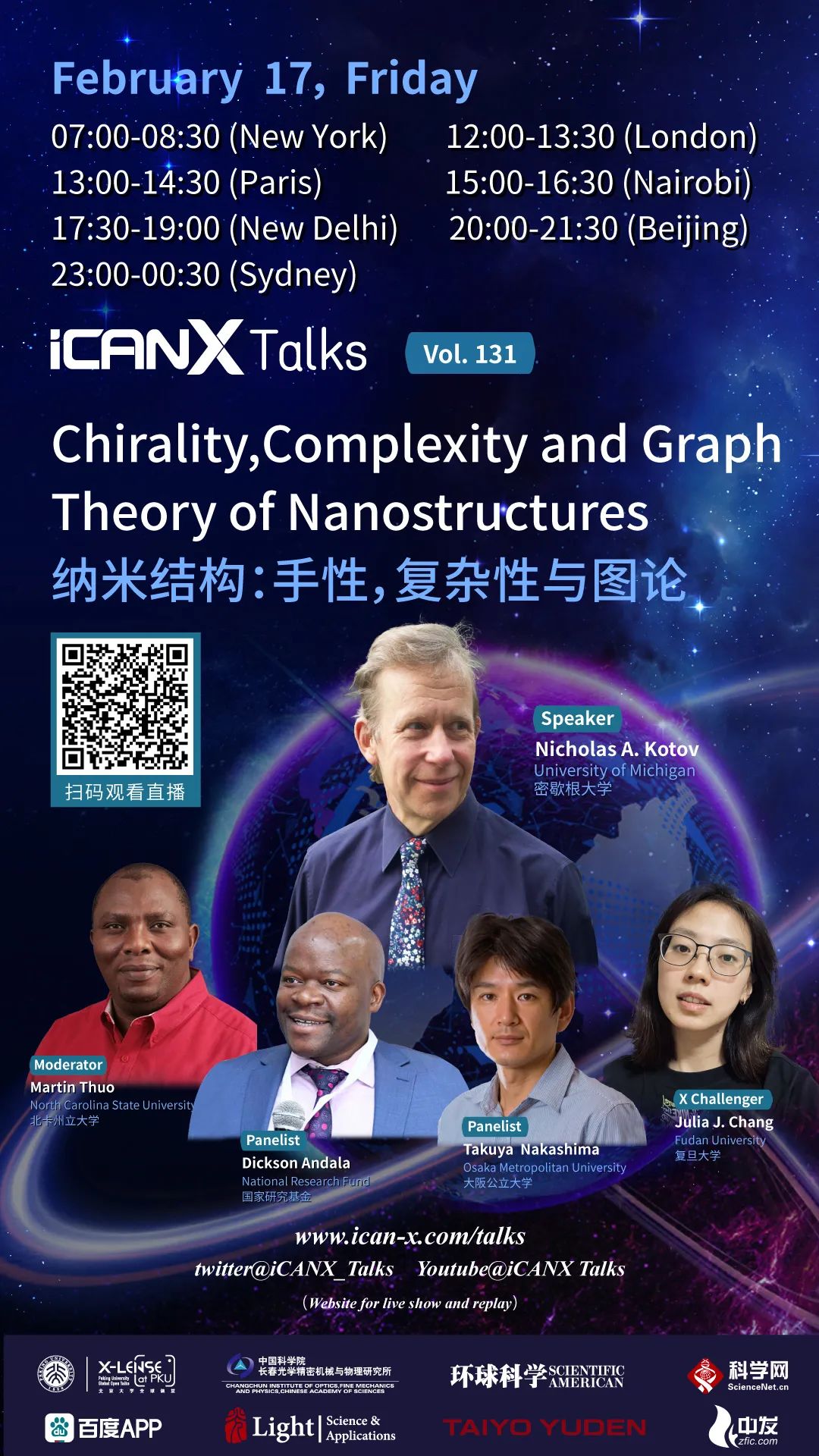Speaker: Nicholas A. Kotov, University of Michigan
Time: 20:00-21:30 pm, Februray 17, 2023, GMT+8
Venue:
Long press to identify the QR code and jump to the webpage!
Abstract:
Since Leonardo Da Vinci discoveries in science and engineering were inspired by evolution-optimized geometry of molecules, tissues, and organisms found in biology using non-biological preparatory techniques. Chiral nanostructures – a large and rapidly evolving class of metal, semiconductor, and ceramic materials is one of these materials. Besides fascinating optical, catalytic, and biological properties, the studies of chiral nanostructures revealed something more. Unlike other geometric properties, mirror asymmetry is invariant to scales. Thus, the synthesis and self-assembly of chiral nanostructures showed how basic geometric properties of the ‘messy soup’ of Nature’s smallest building blocks can produce highly complex functional and adaptable structures at macroscale. Analysis of the hierarchically organized micro- and macrostructures obtained by self-assembly of the chiral nanoparticles (NPs) demonstrated the mechanism of emergence of functional complexity in such systems and how such diversity of the building blocks contributes to it.
These findings became possible by applying graph theory (GT) for calculation of the quantitative measures of their complexity by describing the constituent NPs as nodes and the interfaces between them as edges of graphs. Taking an example of hierarchically organized particles with twisted spikes from polydisperse Au-Cystein nanoplatelets in Fig. 1, we found that (a) formation of complex structures does not require monodispersity; (b) complexity index (CI) of the synthetic particles can be higher than biological prototypes; and (c) complexity emerges from competing chirality-dependent assembly restrictions. The GT description of chiral hedgehogs can also be expanded to other nanoscale structures creating analogs of chemical formulas for particle systems.

Figure 1. Mirror symmetric (A-D) and asymmetric (E-H) nanoparticle assemblies and their GT representations with corresponding complexity indexes.
Among other outcomes of the analysis of the chirality-complexity relations, GT-based description of nanostructures leads to quantitative description of biomimetic materials combining order and disorder that is essential to their functionality. Expansion of GT principles from particles to composites enabled transition from inexact approach of their good-luck-based engineering to function-driven design encompassing multiple properties. While this work is still in progress, the methods of GT-based biomimetic materials engineering can be demonstrated by the multiparameter optimization of complex networks of aramid nanofibers for batteries for robotics and biomedical implants (Fig. 2).
Figure 2. Graphs representation of the self-assembled network of (A) collagen fibers in cartilage and (B) aramid nanofibers in battery membranes and implantable devices.
Biography:
Nicholas A. Kotov is Irving Langmuir Distinguished University Professor in Chemical Sciences and Engineering and Joseph B. and Florence V. Cejka Professor of Engineering at the University of Michigan. He is pioneer of complex nanostructures and self-assembled nanomaterials leading an international team of scientists advancing practical implementations and theoretical foundations of biomimetic nanostructures. Chiral nanostructures represent a focal point in his current work with translation to physics, chemistry, biology, and medicine. Nicholas is a recipient of more than 60 awards and recognitions. Together with his students, Nicholas is a founder of several startups that commercialized biomimetic nanostructures for energy, healthcare and automotive industry. Nicholas is a Fellow of America Academy of Arts and Sciences and National Academy of Inventors. He is also a known advocate of scientists with disabilities.
Source: iCANX



